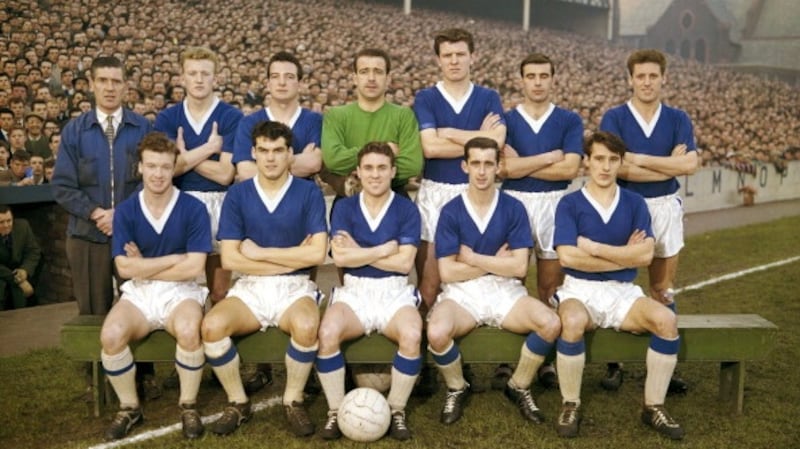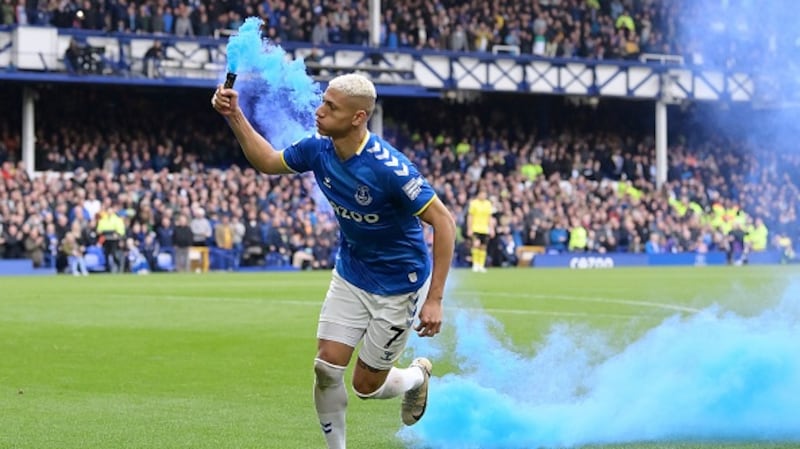Toffeeopolis. In the long lexicon of English football, there cannot be many better or more evocative words than this. It literally smells of Everton. It smells of blue shirts, of Gwladys Street and Bullens Road, of Dixie Dean and Howard Kendall. It smells of old Ma Bushell, the original Toffee Lady and her shop. It smells of Goodison Park. The whole of planet Everton is encapsulated in Toffeeopolis.
You may not have heard it, given it was in fashion in the 1890s. It was used, for example, in the Middlesex Gazette in 1897 in a preview to an Everton FA Cup tie, but Toffeeopolis fell out of the vocabulary and by the 1990s it was a quiz question in the Liverpool Echo.
It deserves a revival. It would be a connection to the past, where Evertonians are often accused of living.
But soon the past will matter a whole lot more. This week Liverpool city council passed a motion regarding the demolition of Goodison Park. Evertonians have had time to get acquainted with the proposed new stadium at Bramley-Moore Dock – two miles away on the Mersey, but seeing the words demolition and Goodison Park in the same sentence might just shake a few.
What would Brian Labone think?
“In the pantheon of Everton greats, few stand as tall as Brian Labone. Long-serving captain, stalwart of Everton’s defence, double league-title winner and FA Cup hero, few can match his achievements or length of service.” This is the first paragraph on Labone in The Everton Encyclopedia.

He played more than 500 games between 1958 and 1972. No outfield player has more appearances. It was Johnny Carey who made Labone a regular as a teenager. Labone had come from "an Everton family" and fulfilled a dream. His statement that one Evertonian "is worth 20 Liverpudlians" endeared him to one side of the city. When Labone died suddenly in 2006, it was after an Everton function on Goodison Road. His ashes were scattered on the penalty spot at the Gwladys Street end. Toffeeopolis.
Goodison Park was an essential piece of Brian Labone’s world. It is for so many Blues and its importance has been emphasized this past month due to the club’s position in the table. While their neighbours fly to finals and glory, Everton are in the basement throwing down sandbags to prevent a collapse into the Championship.
Fightback
The stadium has become the centre of Everton’s resistance. Until last Sunday at Leicester, Everton had the worst away record in the Premier League; it was only home form keeping them afloat.
Frank Lampard has recognised the power of Goodison and although a few facetious managers down the years [often Scottish] have said they’ve never seen a fan score a goal, Lampard observed that it was Everton’s support who “got us over the line” in the last home game against Chelsea.
Lampard called fans “the people of the match”. The crowd at Goodison Park inserted itself into the game and their “ferocity”, as he put it, made a difference. The players did not let up because they were not allowed to let up.

Should Everton stay up, it will be said – correctly – that Goodison Park was a major part of it. A ground laid out in 1892 – “Goodison Park was the first major football stadium in England,” as authority on the subject Simon Inglis wrote – has won fresh applause these last few weeks. Its status as old-school, inspiring and intimidating, has been re-confirmed.
But the surrounding area of Walton is no longer working-class vibrant. To walk around Goodison in 2022, the tight red-brick streets and the old faded ground itself, will be off-putting to some. It is not glossy. It is not a 21st century stadium. Crucially, it is not corporate.
Many Evertonians and neutrals, though, would say this is what they like about Goodison: it represents traditional – and successful – quintessentially northern English football. Goodison Park is an authentic British football experience. Even Liverpool supporters dismayed by Anfield tourism recognise this.
The substance of a stadium that once held 78,000 for a league game in 1948 – and where Con Martin and Peter Farrell scored those famous Irish goals a year later – is one thing. The capacity is now 39,000.
The noise is another. It’s still the noise. Z Cars is still the music. The sound of Goodison is what the music writer Alex Ross might call its “invisible architecture”.
It is not a unique atmosphere, but it is a sonic boom when roused. Having been there the night Everton beat Liverpool 2-1 in 1992 with a late winner from Peter Beardsley, this can be vouched for.
Roberto Martinez is not everyone's favourite Everton manager but in the days before his first Goodison game in charge in 2013 – the first post-David Moyes – Martinez searched for a description of a place he had visited many times as a non-Everton man.
“Goodison is . . . a feeling,” Martinez said, a line that endures. “Even when Everton win a corner the crowd are up celebrating. Somehow you feel the energy of all the successful corners that have gone before. You do feel the history. You do. Somehow.”
Alex Young – the “Golden Vision” and another 1960s great – said: “Goodison Park to me just seems a magical place.
“It’s like when you go into certain houses where the great ghosts have been.”
On Sunday against Brentford and next Thursday against Crystal Palace, Goodison will rumble again. Four points will guarantee Premier League football – inferior goal difference is part of the Leeds implosion. Fans and players will celebrate their old home anew.
Simultaneously the diggers will continue on the docks. If Bramley-Moore is ready for August 2024, it means two seasons left at Goodison, probably less than 50 games. It is a countdown that asks questions about what Everton are giving up.
What would West Ham fans tell them about leaving Upton Park and the move to the London Stadium? What would Arsenal fans say about Highbury? When they’re gone, they’re gone.
This is no nostalgia-fest – Tottenham have made an apparently seamless transition from White Hart Lane to the new ground, though it was virtually on the same premises. At the Bernabeu last week, Real Madrid appeared to show they retain the muscle memory of the old stage even as the new ground grows up around them.
You do feel the history. You do. Somehow.
Modern football is money and the commercial logic of leaving Goodison is obvious. But cherish it while it is here. Those memories, those feelings, the ashes, the sound, the smells. It’s an inheritance. Toffeeopolis.











